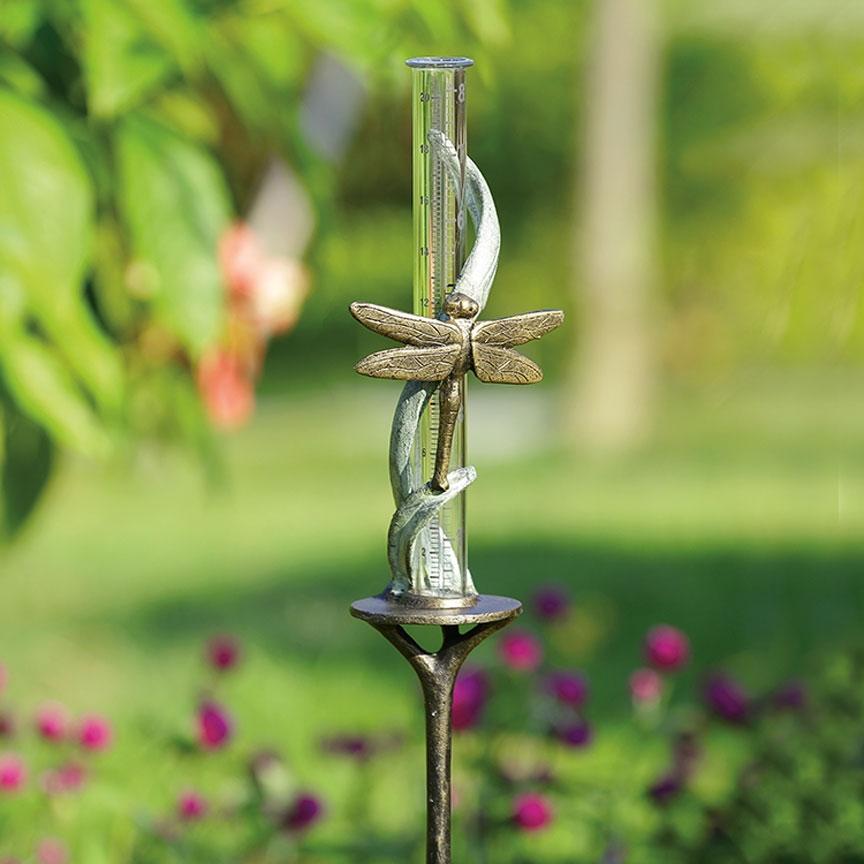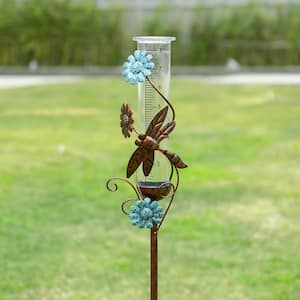Rain gauges are not just practical tools for measuring rainfall; they can also serve as beautiful decorations for your garden or patio. In this comprehensive guide, we’ll explore the enchanting world of decorative rain gauges, sharing personal experiences, tips, and insights on how to choose the perfect one for your outdoor space.
What is a Decorative Rain Gauge?
A decorative rain gauge is an instrument designed to collect and measure precipitation, but with an aesthetic twist. Unlike standard rain gauges that can be plain and utilitarian, decorative models come in various shapes, sizes, and materials, making them appealing additions to any garden or landscape.
The Importance of Measuring Rainfall
Knowing the amount of rainfall your garden receives is crucial for several reasons:
- Watering Needs: Helps determine how much extra watering your plants require.
- Garden Health: Aids in preventing overwatering or underwatering, which can harm your plants.
- Weather Awareness: Provides insight into changing weather patterns over time.

The History of Rain Gauges
Rain gauges date back to ancient civilizations, when early meteorologists used simple containers to measure precipitation. Over the years, these instruments have evolved significantly, integrating not just functionality but also beauty. Today, decorative rain gauges blend tradition with modern aesthetics, allowing gardeners to enjoy the beauty of nature while monitoring their watering needs.

Types of Decorative Rain Gauges
When shopping for decorative rain gauges, you’ll find a range of options to suit different styles and preferences. Here’s a brief overview of the most popular types:

1. Glass Rain Gauges
Glass rain gauges are often artistically designed, featuring vibrant colors and intricate patterns. They can serve as stunning garden focal points.
2. Metal Rain Gauges
Metal rain gauges typically feature ornate designs and are durable against the elements. Common materials include copper, aluminum, and stainless steel.

3. Ceramic Rain Gauges
Ceramic options are often hand-painted and can be whimsical or elegant, making them perfect for personal expression in outdoor decor.
4. Wooden Rain Gauges
Wooden options provide a rustic charm. They can be customized or handcrafted, offering a unique touch.

5. Solar-powered Rain Gauges
These gauges not only measure rainfall but often include digital displays and backlighting, combining technology with traditional measurement methods.
Choosing the Right Decorative Rain Gauge

Selecting the ideal decorative rain gauge for your space can be daunting, but considering a few key factors will simplify the decision-making process. Here are aspects to consider:
1. Material
The material influences both durability and design. Assess your local climate when choosing between glass, metal, ceramic, or wood.

2. Design
Consider your existing garden decor and choose a style that complements it. Whether you prefer sleek and modern or rustic and charming, there’s a rain gauge for you.
3. Visibility
Location matters! Ensure your chosen spot allows for easy visibility and helps the gauge serve its purpose without obstruction.
4. Size
Choose a size that balances aesthetics with functionality. A larger gauge might stand out beautifully, while a smaller gauge may blend better into your garden.
5. Functionality
Look for features such as easy-to-read measurements or added benefits like digital displays or solar lighting.
Comparative Analysis of Popular Decorative Rain Gauges
| Model | Material | Design | Size (inches) | Price Range | Durability | Special Features |
|---|---|---|---|---|---|---|
| Garden Glass Gauge | Glass | Whimsical | 30 | $20 – $45 | High | Beautiful colors |
| Copper Classic | Copper | Traditional | 36 | $35 – $70 | Very High | Antique finish |
| Ceramic Flower Rain Gauge | Ceramic | Artistic | 24 | $30 – $60 | Moderate | Hand-painted |
| Digital Solar Gauge | Plastic/Metal | Modern | 12 | $40 – $80 | High | Display screen |
| Wooden Rustic Gauge | Wood | Rustic | 30 | $25 – $55 | Moderate | Natural finish |
Pros and Cons of Decorative Rain Gauges
Pros
- Enhance the beauty of your garden.
- Provide practical rainfall measurements.
- Available in various styles and materials to match your aesthetics.
- Can be a unique gift for gardening enthusiasts.
Cons
- Some may be less durable than standard rain gauges.
- Prices can vary widely based on design and material.
- May require upkeep or specific care, especially for glass and wood.
Personal Experience: My Love for Decorative Rain Gauges
As an avid gardener, I’ve always been fascinated by the blend of art and utility in garden tools. When I stumbled upon my first decorative rain gauge—a beautiful glass piece adorned with hand-painted flowers—it became an instant favorite. Not only did it add a pop of color to my garden, but it also provided practical data that helped me care for my plants more effectively.
Over the years, I’ve experimented with various styles, from rustic wooden options to sleek metal designs. Each one has added a unique flair to my outdoor space. My current favorite is a solar-powered gauge that lights up at night, adding charm and functionality. It always sparks conversations among guests who admire its clever blend of technology and tradition.
Installing Your Decorative Rain Gauge
Installing your decorative rain gauge is a simple yet rewarding process. Here’s a step-by-step guide:
1. Choose the Location
Select a location that is open to the sky, away from overhanging branches, and where rain can fall directly into the gauge.
2. Prepare the Ground
Ensure the ground is level and clear of debris. If your gauge has a base, use it to stabilize the installation. Otherwise, stake it directly in the soil.
3. Secure the Gauge
Follow the manufacturer’s instructions for securing the gauge. Many decorative rain gauges require minimal assembly, while others may need to be buried slightly for stability.
4. Maintain Regular Checks
Regularly check your rain gauge to ensure accurate measurements, especially after heavy rainfall. Clean it as necessary to avoid debris buildup.
Frequently Asked Questions (FAQs)
What is the best material for a decorative rain gauge?
The best material varies based on your preferences. Metal offers longevity, while glass can be visually striking. Choose what aligns best with your garden style!
How do I clean my decorative rain gauge?
Cleaning depends on the material. For glass, use a gentle glass cleaner. For metal and ceramic, a damp cloth often suffices. Ensure all residue is removed to maintain visibility.
Where should I place my rain gauge for the most accurate reading?
Position your rain gauge in an open area, away from trees or buildings that could obstruct rain. Ideally, it should be at least 5 feet away from objects that could funnel water toward it.
Can decorative rain gauges withstand extreme weather conditions?
Many decorative rain gauges are built to withstand various weather conditions. However, it’s essential to check the product details, as some materials may require protection during harsh winters.
Are there solar-powered options available?
Yes! Many contemporary decorative rain gauges come with solar-powered options that enhance their functionality, offering features like digital displays or nocturnal illumination.
Conclusion
Decorative rain gauges combine beauty and utility, making them a fantastic addition to any garden. Whether you’re a seasoned gardener or a novice, the right rain gauge can enhance your gardening experience while also providing essential rainfall data. As you consider your options, remember to select one that resonates with your personal style and complements your outdoor space.
With the right decorative rain gauge, you’ll not only measure rainfall but also add a charming element to your landscape, showcasing your love for both nature and design.